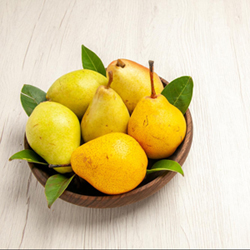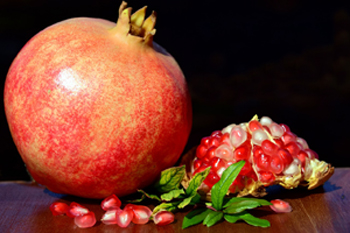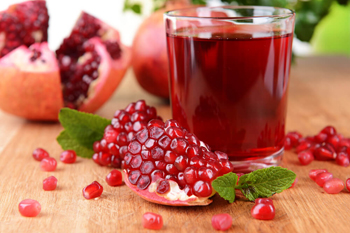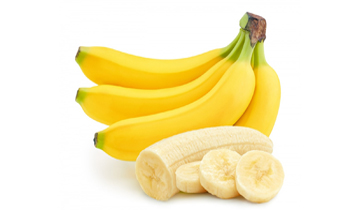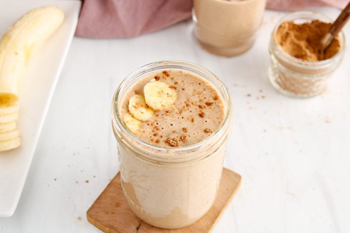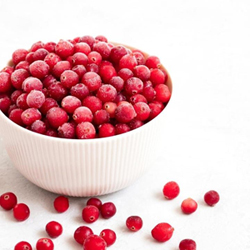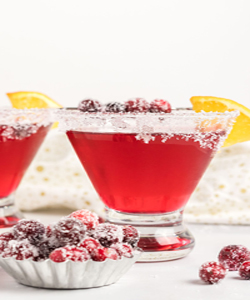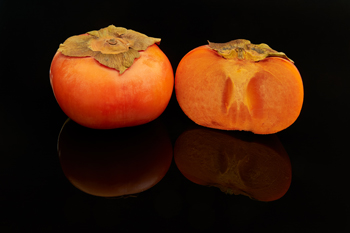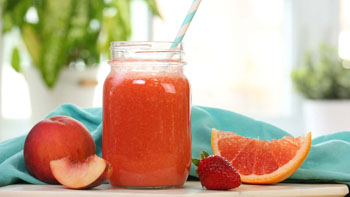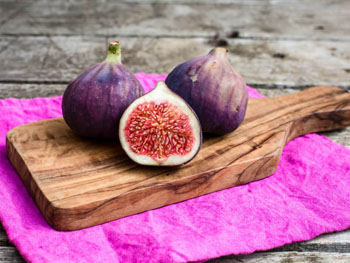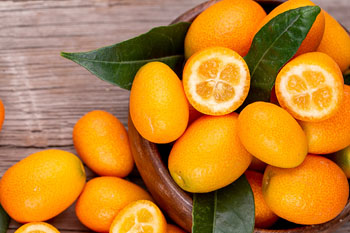 Full List Of Winter Fruits
Full List Of Winter Fruits 10 Best Winter Fruit
Pear Fruit
1)![]() Pear Fruit For Winter Season
Pear Fruit For Winter Season
Scientific Name - Pyrus Communis
Pears fruit, scientifically known as Pyrus, is a delightful and nutritious fruit that has been cherished for centuries. With its appealing shape, smooth texture, and delightful taste, the pear has become a beloved addition to Fruit baskets, culinary creations, and even poetic verses. Renowned for its natural sweetness and juicy flesh, the pear is a symbol of grace, abundance, and health.
Originating in ancient times, the pear tree thrives in temperate climates around the world, making it a widely cultivated fruit. The fruit itself varies in size, shape, and color, with shades ranging from green and yellow to red and brown, depending on the variety. Its thin, delicate skin encloses a succulent, aromatic flesh that often contains a soft, buttery consistency. The flavor profile of a pear can be sweet and slightly tangy, offering a pleasant balance of flavors.
Pears are not only a delight to the taste buds but also a valuable source of essential nutrients. They are rich in dietary fiber, antioxidants, and various vitamins, such as vitamin C, vitamin K, and several B vitamins. Additionally, pears are a good source of minerals like copper and potassium, which contribute to maintaining healthy bodily functions.
Whether enjoyed fresh as a snack, sliced into salads, or baked into pies and tarts, pears offer versatility in culinary applications. Their unique flavor and texture lend themselves well to both sweet and savory dishes, making them a versatile ingredient in a wide array of recipes.
In addition to their culinary appeal, pears hold cultural significance in many societies. They have been associated with love, longevity, and wisdom in various folklore and traditions. From the European pear varieties like Bartlett and Anjou to Asian varieties such as the Nashi pear, this fruit has woven itself into the fabric of cultures across the globe.
In conclusion, the Pears fruit is a delectable and nutritious treat that combines natural sweetness with a refreshing taste. Its rich history, versatility in cooking, and health benefits make it a cherished fruit among food lovers and nutrition enthusiasts alike. So, whether you bite into a crisp pear or savor its flavors in a culinary creation, this Fruit is sure to add a touch of elegance and delight to your palate.
![]() Nutritional Value Of Pear Fruit
Nutritional Value Of Pear Fruit
| Nutrition | Nutritive value |
| Calories | 101 |
| Protein | 1 g |
| Carbs | 27 g |
| Fiber | 6 g |
| Vitamin C | 9% |
| Vitamin K | 7% |
| Potassium | 4% |
| Copper | 16% |
Nutrient-Rich:Pears are packed with essential nutrients. They are a good source of dietary fiber, vitamin C, potassium, and antioxidants. Consuming pears during winter can contribute to a well-rounded and nutritious diet.
Immune Support:Pears contain vitamin C, which is known for its immune-boosting properties. Adequate vitamin C intake helps support a healthy immune system, protecting you from seasonal colds and flu.
Digestive Health:Pears are high in dietary fiber, both soluble and insoluble. This fiber helps support a healthy digestive system, promotes regular bowel movements, and prevents constipation. Consuming pears can aid in maintaining optimal digestive health during winter.
Heart Health:Pears are low in saturated fat, cholesterol, and sodium while being rich in potassium. Potassium helps regulate blood pressure and supports cardiovascular health. Including pears in your winter diet can contribute to a healthy heart.
Antioxidant Power: Pears contain antioxidants, such as vitamin C and flavonoids, which help protect the body against oxidative stress and reduce the risk of chronic diseases. Antioxidants also promote healthy aging and support overall well-being.
Hydration:Pears have a high water content, making them a hydrating Fruit to enjoy during the drier winter months. Staying properly hydrated is important for overall health, maintaining bodily functions, and promoting healthy skin.
Weight Management:Pears are relatively low in calories and high in fiber, making them a satisfying and nutritious snack for weight management. The fiber content helps promote feelings of fullness, reducing the likelihood of overeating.
Skin Health:The antioxidants in pears, including vitamin C, contribute to healthy skin. They help protect against oxidative damage, promote collagen synthesis, and maintain a youthful complexion. Consuming pears can help improve skin health during winter.
Culinary Versatility:Pears can be enjoyed in various ways. They can be eaten fresh, added to salads, used in baked goods, poached, or incorporated into savory dishes. Their sweet and juicy flavor adds a delightful touch to winter recipes.
Fresh Snack:Enjoy Pears as a healthy and delicious snack. Wash the pears, slice them, and eat them as is. Pears are juicy and have a sweet flavor.
Fruit Salad:Add sliced pears to fruit salads for a sweet and refreshing twist. Combine them with other Fruit like apples, berries, and grapes for a colorful and flavorful salad.
Poached Pears:Poaching pears is a popular way to enhance their flavor and create a tender texture. Simmer peeled and cored pears in a syrup made with water, sugar, and spices like cinnamon and vanilla. The poached pears can be served as a dessert on their own or used as a topping for ice cream or cakes.
Pear Sauce:Make homemade pear sauce by cooking peeled and chopped pears with a little water, sugar, and spices. Blend the mixture until smooth or leave it chunky for a textured sauce. Pears sauce can be used as a topping for pancakes, waffles, or yogurt, or as a filling for pastries and ca
Baked Pears:Baking pears brings out their natural sweetness and creates a soft and caramelized texture. Cut the pears in half, remove the core, and place them in a baking dish. Drizzle them with honey or sprinkle them with cinnamon before baking. Baked pears can be enjoyed on their own or served with a scoop of vanilla ice cream.
Pear Preserves or Jam:Make homemade pear preserves or jam by cooking peeled and chopped pears with sugar and lemon juice. The preserves can be spread on toast, muffins, or used as a filling for pastries and cookies.
Pear Smoothies:Blend pears with yogurt, milk or a dairy-free alternative, and a sweetener of your choice to create a creamy and nutritious smoothie. You can add other fruits like bananas, berries, or spinach for added flavor and nutrients.
Pear Salsa:Create a unique salsa by combining diced pears with ingredients like onions, bell peppers, jalapeņos, cilantro, and lime juice. This fruity salsa pairs well with grilled meats, fish, or as a topping for tacos and salads.
Pear Facial Mask: Pears contain vitamins and antioxidants that can benefit the skin. Mash a ripe pear and mix it with yogurt or honey to create a nourishing face mask. Apply it to your face, leave it on for about 15 minutes, and then rinse off for a refreshed and glowing complexion.
Pomegranate Fruit
2)![]() Pomegranate Fruit For Winter Season
Pomegranate Fruit For Winter Season
Scientific Name - Punica Granatum
Pomegranate, scientifically known as Punica granatum, is a captivating fruit that has captivated cultures for thousands of years. Renowned for its unique appearance, vibrant red color, and abundance of juicy arils, the pomegranate is a symbol of fertility, abundance, and vitality.
Originating in the region of modern-day Iran and surrounding areas, the pomegranate tree has a long history intertwined with human civilization. Its cultivation spread across ancient civilizations, including those of the Mediterranean, Middle East, and Asia. Today, pomegranates are grown in various countries around the world, with different cultivars and varieties exhibiting distinct flavors and characteristics.
The pomegranate Fruit itself is visually striking, characterized by its rounded shape and a crown-like calyx at the top. When you cut open a pomegranate, you are greeted by a treasure trove of jewel-like arils, each containing a juicy pulp and a seed within. These edible arils have a sweet and tart flavor, delivering a delightful burst of refreshing juice with every bite.
Beyond its delicious taste, pomegranate offers an array of health benefits. It is a rich source of antioxidants, particularly polyphenols, which are believed to contribute to its potential health-promoting properties. Pomegranates are also a good source of vitamins, including vitamin C and vitamin K, as well as dietary fiber.
The versatility of pomegranate extends beyond its consumption as a fruit. Pomegranate juice is a popular choice for refreshing beverages, and its distinct flavor and color make it a favored ingredient in both sweet and savory dishes. The arils can be sprinkled over salads, incorporated into desserts, or used as a garnish, adding a touch of elegance and flavor to culinary creations.
In many cultures, pomegranate holds symbolic and cultural significance. It has been associated with fertility, prosperity, and even immortality in various mythologies and religious traditions. Pomegranate motifs and depictions can be found in ancient art, architecture, and literature, further emphasizing its enduring allure.
In conclusion, the pomegranate is a captivating fruit that combines visual appeal, delightful taste, and potential health benefits. From its ancient origins to its modern-day popularity, this Fruit continues to captivate and inspire. So, whether you enjoy its juicy arils, indulge in its vibrant juice, or incorporate it into culinary creations, the pomegranate is sure to add a touch of beauty and flavor to your experience.
![]() Nutritional Value Of Pomegranate Fruit
Nutritional Value Of Pomegranate Fruit
| Nutrition | Nutritive value |
| Calories | 234 |
| Protein | 4.7 g |
| Fat | 3.3 g |
| Carbohydrates | 52 g |
| Fiber | 11.3 g |
| Vitamin C | 32% |
| Folate | 27% |
| Magnesium | 8% |
| Phosphorus | 8% |
| Potassium | 13% |
![]() Health Benefits Of Pomegranate Fruit
Health Benefits Of Pomegranate Fruit
Rich in Antioxidants:Pomegranate are loaded with powerful antioxidants, such as polyphenols and flavonoids. These antioxidants help protect the body against oxidative stress, reducing the risk of chronic diseases and promoting overall well-being.
Immune Support:Pomegranates contain vitamin C, which is essential for a healthy immune system. Adequate vitamin C intake helps strengthen your immune defenses, protecting you from seasonal illnesses and supporting your overall well-being during winter.
Heart Health:Pomegranates have been shown to have heart-healthy benefits. They help lower blood pressure, reduce inflammation, and improve cholesterol levels. Including pomegranates in your winter diet can contribute to a healthy heart.
Anti-Inflammatory Properties:Pomegranates have natural anti-inflammatory properties, which can be beneficial during the winter months when inflammatory conditions like colds, flu, and joint pain are more common. Consuming pomegranates may help reduce inflammation and alleviate symptoms.
Digestive Health:Pomegranates are a good source of dietary fiber, which supports a healthy digestive system. Fiber aids in regular bowel movements, prevents constipation, and promotes a healthy gut microbiome. Including pomegranate in your winter diet can aid in maintaining optimal digestive health.
Hydration:Pomegranates have a high water content, making them a hydrating Fruit to enjoy during the drier winter months. Staying properly hydrated is important for overall health, maintaining bodily functions, and promoting healthy skin.
Skin Health:Pomegranates are beneficial for your skin due to their antioxidant content. They help protect against oxidative damage, promote collagen production, and may contribute to healthy, radiant skin even in the harsh winter weather.
Nutrient-Rich:Pomegranates are packed with essential nutrients, including vitamins A, E, and K, as well as potassium and folate. Consuming pomegranates during winter can help ensure you're getting a variety of nutrients to support overall health.
Culinary Versatility:Pomegranate can be enjoyed in various ways. You can eat the juicy arils (seeds) on their own, sprinkle them on salads or yogurt, use the juice in dressings or marinades, or incorporate them into desserts and beverages. Their sweet and tart flavor adds a burst of freshness to winter recipes.
Fresh Snack:Enjoy pomegranate arils (the juicy red seeds) as a refreshing and healthy snack. Simply cut the pomegranate in half and gently tap the back with a spoon to release the arils. Eat them as is or sprinkle them over yogurt, salads, or desserts.
Juice:Extract the juice from pomegranates by pressing the arils through a sieve or using a juicer. Pomegranate juice can be enjoyed on its own or used as a base for cocktails, mocktails, and smoothies.
Fruit Salad:Add pomegranate arils to Fruit salads for a burst of color and sweetness. They pair well with other fruits like oranges, apples, and grapes.
Salad Topping:Sprinkle pomegranate arils over green salads or grain bowls to add a pop of flavor and texture. They complement a variety of ingredients like mixed greens, nuts, cheese, and vinaigrettes.
Sauce and Syrup:Make a pomegranate sauce or syrup by simmering pomegranate juice with sugar and spices. The sauce can be used as a topping for pancakes, waffles, or ice cream, or as a glaze for meats and roasted vegetables.
Pomegranate Molasses:Reduce pomegranate juice to a thick syrup consistency to create pomegranate molasses. It can be used as a flavoring agent in dressings, marinades, or drizzled over desserts for a tangy and sweet touch.
Smoothies and Smoothie Bowls:Blend pomegranate arils with other fruits, yogurt, and a liquid of your choice to create a refreshing and nutrient-packed smoothie. You can also use the blended mixture as a base for smoothie bowls, topped with granola, nuts, and additional Fruit.
Pomegranate Ice Cubes:Freeze pomegranate juice or pomegranate arils in ice cube trays to add a burst of flavor and visual appeal to beverages like water, lemonade, or cocktails.
Pomegranate Face Mask:Pomegranate are rich in antioxidants that can benefit the skin. Blend pomegranate arils and mix them with yogurt or honey to create a nourishing face mask. Apply it to your face, leave it on for about 15 minutes, and then rinse off for a revitalized and glowing complexion
Banana Fruit
3)![]() Banana Fruit For Winter Season
Banana Fruit For Winter Season
Scientific Name - Musa Paradisiaca
Banana, scientifically known as Musa, are one of the most widely consumed and recognizable fruits in the world. With their distinctive curved shape, vibrant yellow color, and sweet taste, bananas have become a staple Fruit enjoyed by people of all ages.
Originating in Southeast Asia, particularly in the region encompassing Malaysia, Indonesia, and the Philippines, bananas have a rich history dating back thousands of years. They have been cultivated and traded across continents, eventually spreading to various parts of the world through exploration and trade routes.
The banana fruit is characterized by its elongated shape, which is often curved, and its vibrant yellow peel that gradually turns from green to yellow as it ripens. The peel protects the soft, creamy flesh inside, which is rich in natural sugars and has a uniquely smooth and slightly tangy flavor. Bananas are also available in different stages of ripeness, with green bananas being starchy and less sweet, while fully ripe bananas are softer and sweeter.
One of the key attributes of bananas is their exceptional nutritional value. They are an excellent source of dietary fiber, vitamin C, potassium, and vitamin B6. Banana are low in calories and fat, making them a healthy snack choice and a popular energy booster among athletes and individuals leading an active lifestyle.
Beyond their nutritional benefits, bananas offer incredible versatility in the culinary world. They can be enjoyed as a convenient on-the-go snack, sliced into breakfast cereals or yogurt, blended into smoothies, used in baking for added moisture and natural sweetness, or incorporated into a variety of savory dishes.
Bananas also have cultural significance in many parts of the world. They have been associated with tropical regions and are often depicted as symbols of relaxation, leisure, and vacation. In addition, the banana plant itself, which is not a tree but an herbaceous plant, has practical uses beyond the Fruit. The plant's leaves are used in cooking, and the sturdy stem is utilized for various purposes, such as making paper and textiles.
In conclusion, banana are a beloved fruit known for their distinct shape, vibrant color, and delightful taste. With their nutritional benefits, culinary versatility, and cultural significance, bananas have earned a special place in the hearts and palates of people worldwide. So, whether you enjoy a banana as a quick snack or incorporate it into your favorite recipes, this fruit is sure to bring a burst of flavor and a touch of tropical charm to your table.
![]() Nutritional Value Of Banana Fruit
Nutritional Value Of Banana Fruit
| Nutrition | Nutritive value |
| Calories | 89 |
| Water | 75% |
| Protein | 1.1 g |
| Carbs | 22.8 g |
| Sugar | 12.2 g |
| Fiber | 2.6 g |
| Fat | 0.3 g |
![]() Health Benefits Of Banana Fruit
Health Benefits Of Banana Fruit
Energy Boost:Banana are a great source of natural sugars, including fructose, glucose, and sucrose. These sugars provide a quick and sustained energy boost, making bananas an ideal snack during the winter months when you may need an extra pick-me-up.
Mood Enhancement: Bananas contain tryptophan, an amino acid that the body converts into serotonin, a neurotransmitter associated with mood regulation. Consuming bananas may help improve mood and reduce the risk of winter blues or seasonal affective disorder (SAD).
Immune Support:Bananas are rich in vitamin C, which is known for its immune-boosting properties. Adequate vitamin C intake supports a healthy immune system, helping to ward off winter illnesses and maintain overall well-being.
Digestive Health:Bananas are a good source of dietary fiber, both soluble and insoluble. Fiber helps promote healthy digestion, regulates bowel movements, and prevents constipation. Including banana in your winter diet can aid in maintaining optimal digestive health.
Nutrient-Rich:Bananas are packed with essential nutrients, including potassium, vitamin B6, vitamin C, and dietary fiber. These nutrients contribute to overall health and well-being, supporting proper muscle function, nerve function, and metabolism.
Natural Electrolytes: Bananas are a rich source of potassium, an essential electrolyte that helps maintain fluid balance, support muscle function, and regulate blood pressure. Consuming bananas during winter can help replenish electrolytes lost through sweating or dehydration.
Hydration: Bananas have a high water content and can contribute to hydration, especially when consumed along with fluids. Staying properly hydrated during winter is important for maintaining overall health and well-being.
Mood Stabilization:Bananas contain vitamin B6, which is involved in the production of neurotransmitters, including serotonin and dopamine. These neurotransmitters play a role in regulating mood and promoting feelings of happiness and well-being.
Convenience and Versatility:Banana are a convenient and portable snack, making them an easy choice for on-the-go nourishment during winter. They can be eaten as is, added to smoothies, used in baking recipes, or sliced onto oatmeal or yogurt for a nutritious boost.
Fresh Snack:Enjoy banana as a quick and nutritious snack on their own. They come in a natural and convenient packaging, making them easy to grab and eat.
Smoothies: Blend bananas with other Fruit, milk or a dairy-free alternative, and a sweetener of your choice to create creamy and delicious smoothies. You can also add yogurt, spinach, or nut butter for added flavor and nutrition.
Banana Bread: Use overripe bananas to make homemade banana bread. Mash the bananas and incorporate them into a batter with flour, sugar, eggs, and other ingredients. Bake it until golden brown for a moist and flavorful treat.
Pancakes and Waffles:Mash bananas and add them to pancake or waffle batter to add natural sweetness and moisture. This will result in fluffy and tasty breakfast treats.
Frozen Banana Treats:Peel and freeze ripe banana for a healthy and satisfying frozen treat. You can enjoy them as is or blend them into a creamy "nice cream" by adding flavorings like cocoa powder, vanilla extract, or frozen berries.
Banana Pudding:Layer sliced bananas with vanilla pudding and cookies to create a classic banana pudding dessert. The creamy texture of the pudding pairs perfectly with the sweetness of the bananas.
Banana Yogurt Parfait:Layer sliced bananas with yogurt and granola in a glass or bowl to create a tasty and nutritious parfait. This makes for a satisfying breakfast or snack option.
Banana Chips:Slice bananas into thin rounds and bake them at a low temperature until they become crispy. Homemade banana chips are a healthier alternative to store-bought chips and make for a delicious snack.
Banana Face Mask:Mash a ripe banana and mix it with ingredients like honey or yogurt to create a nourishing face mask. Apply it to your face, leave it on for about 15 minutes, and then rinse off for soft and glowing skin.
Cranberry Fruit
4)![]() Cranberry Fruit For Winter Season
Cranberry Fruit For Winter Season
Scientific Name - Vaccinium Macrocarpon
Cranberries, scientifically known as Vaccinium macrocarpon, are small, tart berries that have become synonymous with the holiday season and festive celebrations. Native to North America, cranberries have a long history and have been cherished for their unique flavor and potential health benefits.
Cranberries grow on evergreen shrubs that thrive in wetlands, particularly in regions like the northeastern United States and Canada. The berries are characterized by their deep red color and a glossy exterior. When you bite into a cranberry, you'll encounter a tart and slightly acidic taste that adds a vibrant burst of flavor to various culinary creations.
Cranberries are highly versatile and can be enjoyed in different forms. They are commonly consumed in juice form, which provides a refreshing and tangy beverage option. Dried cranberries are a popular snack and can be used in baked goods, salads, or trail mixes. Cranberry sauce, a staple during Thanksgiving dinners, adds a sweet and tangy element to complement savory dishes.
Beyond their culinary appeal, cranberries are renowned for their potential health benefits. They are rich in antioxidants, particularly proanthocyanidins, which are believed to contribute to their ability to support urinary tract health. Cranberries also contain vitamins C, E, and K, as well as dietary fiber.
Cranberries have a rich cultural significance as well. Native American tribes have long recognized the value of cranberries and incorporated them into their traditional diets and medicinal practices. In modern times, cranberries have become a symbol of abundance, gratitude, and togetherness, often associated with Thanksgiving and holiday festivities.
The tartness of cranberries makes them an excellent complement to a variety of dishes. They can be used to add a pop of flavor to salads, incorporated into desserts like pies and tarts, or infused into sauces and marinades. With their vibrant color and distinct taste, cranberries offer both visual appeal and a burst of tangy goodness to any recipe.
In conclusion, Cranberries are a unique and flavorful fruit that adds a tangy twist to the culinary world. Their rich history, potential health benefits, and cultural significance make them a beloved ingredient during festive occasions and beyond. So, whether you enjoy cranberries in juice form, dried as a snack, or incorporated into a delicious recipe, these berries bring a touch of tartness and festive spirit to your table.
![]() Nutritional Value Of Cranberry Fruit
Nutritional Value Of Cranberry Fruit
| Nutrition | Nutritive value |
| Calories | 46 |
| Water | 87% |
| Protein | 0.4 g |
| Carbs | 12.2 g |
| Sugar | 4 g |
| Fiber | 4.6 g |
| Fat | 0.1 g |
![]() Health Benefits Of Cranberry Fruit
Health Benefits Of Cranberry Fruit
Immune Support:Cranberries are packed with antioxidants, including vitamin C, which is known for its immune-boosting properties. Adequate vitamin C intake supports a healthy immune system, helping to defend against winter illnesses and keep you feeling your best.
Urinary Tract Health:Cranberries are well-known for their ability to support urinary tract health. They contain compounds called proanthocyanidins (PACs), which can help prevent certain bacteria from adhering to the urinary tract, reducing the risk of urinary tract infections (UTIs). Consuming cranberries during winter may be particularly beneficial for maintaining urinary health.
Antioxidant Power: Cranberries are rich in antioxidants that help protect the body against oxidative stress caused by free radicals. These antioxidants contribute to overall health and well-being and may reduce the risk of chronic diseases.
Heart Health: The antioxidants and polyphenols found in cranberries have been associated with cardiovascular health benefits. They can help reduce inflammation, improve cholesterol levels, and support healthy blood pressure, all of which are important for heart health.
Digestive Health:Cranberries are a good source of dietary fiber, which supports a healthy digestive system. Fiber aids in regular bowel movements, promotes a healthy gut microbiome, and may help prevent constipation. Including cranberries in your winter diet can contribute to optimal digestive health.
Antimicrobial Properties:Cranberries contain certain compounds that have antimicrobial properties, which may help inhibit the growth of bacteria and other pathogens. Consuming Cranberries may contribute to overall oral health and support the body's defense against various infections.
Nutrient-Rich:Cranberries are low in calories and rich in essential nutrients. They are a good source of vitamins C and E, dietary fiber, manganese, and various phytonutrients. Incorporating cranberries into your winter diet can provide a range of nutrients to support overall health.
Culinary Versatility:Cranberries can be enjoyed in various forms, such as fresh, dried, or in juice form. They can be added to sauces, salads, baked goods, and smoothies, offering a tart and refreshing flavor to a wide range of winter recipes.
Long Shelf Life:Cranberries have a relatively long shelf life, making them a convenient and accessible Fruit during the winter season. You can stock up on fresh cranberries and store them in the refrigerator for several weeks or freeze them for extended use.
Cranberry Sauce:Cranberries sauce is a classic accompaniment to holiday meals. Simmer fresh or frozen cranberries with sugar and water until they burst and form a sauce. You can customize it by adding spices like cinnamon or orange zest for extra flavor.
Cranberry Juice:Blend fresh or frozen cranberries with water and sweeten to taste to create homemade cranberry juice. You can enjoy it on its own or use it as a base for cocktails or mocktails.
Baking:Add dried Cranberries to baked goods like cookies, muffins, bread, and cakes. They add a burst of tartness and texture to your favorite recipes.
Salad Topping:Sprinkle dried cranberries over salads to add a pop of color and tangy flavor. They pair well with mixed greens, nuts, cheese, and vinaigrettes.
Trail Mix:Combine dried cranberries with nuts, seeds, and other dried Fruit to create a homemade trail mix. It makes for a convenient and nutritious snack on the go.
Cranberry Jam or Jelly: Cook cranberries with sugar and water to make a flavorful cranberry jam or jelly. Spread it on toast, crackers, or use it as a filling for pastries and cakes.
Infused Water or Tea: Add fresh or frozen cranberries to a pitcher of water or hot tea to infuse a tart and refreshing flavor. You can combine them with other fruits or herbs for added variety.
Cranberry Ice Cubes:Freeze cranberry juice or whole cranberries in ice cube trays to add a decorative touch and a burst of flavor to your beverages.
Cranberry Face Mask:Cranberries contain antioxidants that can benefit the skin. Blend cranberries with ingredients like yogurt, honey, or oats to create a homemade face mask. Apply it to your face, leave it on for about 15 minutes, and then rinse off for a rejuvenated and glowing complexion.
Persimmon Fruit
5)![]() Persimmon Fruit For Winter Season
Persimmon Fruit For Winter Season
Scientific Name - Diospyros
Persimmon, scientifically known as Diospyros, is a delightful and unique Fruit that has captivated people for centuries. With its striking appearance, sweet flavor, and versatility in culinary applications, the persimmon has become a beloved fruit in many cultures around the world.
Persimmons are native to East Asia but have spread to various parts of the globe, including North America and Europe. The fruit is typically round or oval-shaped, and its skin can range in color from light yellow to deep orange-red, depending on the variety. When fully ripe, the flesh of the persimmon becomes soft and succulent, offering a luscious, honey-like sweetness that is truly distinctive.
One of the most fascinating aspects of persimmons is the transformation they undergo as they ripen. Some varieties of persimmons, such as the Hachiya variety, are highly astringent when unripe, causing a dry, puckering sensation in the mouth. However, once fully ripened, the astringency diminishes, and the fruit becomes incredibly sweet and flavorful. Other varieties, like the Fuyu persimmon, are non-astringent and can be enjoyed when still firm.
Persimmons are not only delicious but also offer several health benefits. They are a good source of dietary fiber, which aids in digestion and helps maintain a healthy digestive system. Persimmons also contain vitamins A and C, as well as minerals like potassium and manganese. Additionally, they are rich in antioxidants, which may help protect the body against oxidative stress and promote overall well-being.
In terms of culinary uses, persimmons lend themselves well to both sweet and savory dishes. They can be eaten fresh as a snack, sliced and added to salads, or used as an ingredient in baked goods, jams, and desserts. Persimmons can also be dried, which concentrates their flavor and makes for a chewy, delicious treat.
Beyond their culinary appeal, persimmons have cultural significance in various regions. In Japan, the persimmon is associated with good fortune and is often seen as a symbol of autumn. In other cultures, the fruit is linked to prosperity, longevity, and even spirituality, featuring prominently in traditional ceremonies and celebrations.
In conclusion, persimmons are a unique and delightful Fruit that offers a burst of sweet, honey-like flavor. With their striking appearance, health benefits, and culinary versatility, they have earned a special place in the hearts and kitchens of people worldwide. So, whether you bite into a ripe persimmon, savor its flavors in a dessert, or explore its cultural significance, this fruit is sure to bring joy and a touch of exoticism to your palate.
![]() Nutritional Value Of Persimmon Fruit
Nutritional Value Of Persimmon Fruit
| Nutrition | Nutritive value |
| Calories | 118 |
| Vitamin A | 55% |
| Vitamin C | 22% |
| Vitamin E | 6% |
| Fiber | 6g |
| Carbohydrates | 31g |
| Sugar | 21g |
| Protein | 1g |
![]() Health Benefits Of Persimmon Fruit
Health Benefits Of Persimmon Fruit
Rich in Nutrients:Persimmons are a good source of vitamins A, C, and E, as well as dietary fiber and minerals like potassium and manganese. These nutrients contribute to overall health and well-being, supporting various bodily functions.
Immune Support:Persimmons are packed with vitamin C, which is known for its immune-boosting properties. Adequate vitamin C intake supports a healthy immune system, helping to protect against winter illnesses and promoting overall well-being.
Heart Health:Persimmons contain fiber, potassium, and antioxidants that are beneficial for heart health. The fiber helps lower cholesterol levels, while potassium helps regulate blood pressure. Including persimmons in your winter diet can contribute to a healthy heart.
Digestive Health:Persimmons are a good source of dietary fiber, which promotes a healthy digestive system. Fiber aids in regular bowel movements, prevents constipation, and supports a healthy gut microbiome. Consuming persimmons can aid in maintaining optimal digestive health during winter.
Antioxidant Power:Persimmons contain powerful antioxidants, including beta-carotene and flavonoids, which help protect the body against oxidative stress and reduce the risk of chronic diseases. Antioxidants also promote healthy aging and overall well-being.
Hydration:Persimmons have a high water content, making them a hydrating Fruit to enjoy during the winter months. Staying properly hydrated is important for overall health, maintaining bodily functions, and promoting healthy skin.
Eye Health:Persimmons are rich in vitamin A and beta-carotene, which are essential for eye health. These nutrients contribute to good vision, support the health of the retina, and protect against age-related macular degeneration.
Culinary Versatility:Persimmons can be enjoyed in various ways. They can be eaten fresh, added to salads, used in baked goods, or incorporated into smoothies and desserts. Their sweet and slightly tangy flavor adds a unique touch to winter recipes.
Mood Enhancement:Persimmons contain certain compounds that have mood-enhancing properties. They may help improve mood, reduce stress, and support overall mental well-being during the winter season.
Fresh Snack:Enjoy persimmons as a healthy and flavorful snack on their own. Simply peel and slice the Fruit, and eat it as is. Persimmons have a sweet and slightly tangy flavor.
Fruit Salad:Add sliced or diced persimmons to fruit salads for a unique and refreshing twist. They pair well with other fruits like apples, pears, and berries.
Smoothies:Blend persimmons with yogurt, milk or a dairy-free alternative, and other fruits for a creamy and nutritious smoothie. You can add ingredients like bananas, spinach, or chia seeds for added flavor and health benefits.
Persimmon Jam:Make homemade persimmon jam by cooking peeled and chopped persimmons with sugar and lemon juice. Simmer until the Fruit breaks down and thickens into a jam-like consistency. Spread it on toast, pancakes, or use it as a filling for pastries.
Baked Goods:Incorporate persimmons into baked goods like cakes, bread, muffins, and pies. They add moisture and a delightful sweetness to the finished treats.
Salsa or Relish:Create a unique salsa or relish by combining diced persimmons with ingredients like onions, jalapeņos, cilantro, lime juice, and spices. This can be used as a topping for grilled meats, fish, or as a flavorful addition to tacos and salads.
Persimmon Chutney:Make a tangy and sweet chutney by cooking persimmons with onions, vinegar, sugar, and spices. This versatile condiment pairs well with cheese, roasted meats, or can be used as a sandwich spread.
Desserts:Use persimmons in desserts like puddings, tarts, and crumbles. Their natural sweetness and soft texture make them a delicious addition to any sweet treat.
Persimmon Facial Mask:Persimmons are rich in antioxidants and vitamins that can benefit the skin. Mash a ripe persimmon and mix it with ingredients like honey or yogurt to create a nourishing face mask. Apply it to your face, leave it on for about 15 minutes, and then rinse off for a refreshed and glowing complexion.
Apple Fruit
6)![]() Apple Fruit For Winter Season
Apple Fruit For Winter Season
Scientific Name - Malus Domestica
Apple, scientifically known as Malus domestica, are among the most iconic and widely consumed Fruit in the world. With their crisp texture, refreshing juiciness, and diverse range of flavors, apples have captured the hearts and taste buds of people for centuries.
Believed to have originated in Central Asia, apples have a rich history and have been cultivated across different continents for thousands of years. Today, there are thousands of apple varieties, each offering its own unique combination of taste, texture, and appearance.
Apples come in various shapes, sizes, and colors, ranging from shades of red, green, and yellow. Their skin can be smooth or slightly textured, encasing the firm and succulent flesh within. The flavor profiles of apples span a wide spectrum, from sweet and honey-like to tangy and slightly tart. This diversity allows individuals to find an apple variety that suits their personal preferences.
Not only are apples delicious, but they also provide numerous health benefits. Apple are a great source of dietary fiber, including both soluble and insoluble fiber, which promotes healthy digestion and helps maintain regular bowel movements. They are also rich in antioxidants, particularly flavonoids, which may help reduce the risk of certain chronic diseases. Apples contain vitamins such as vitamin C, vitamin A, and various B vitamins, as well as minerals like potassium.
Apples are a versatile fruit that can be enjoyed in various ways. They can be eaten fresh as a convenient and nutritious snack, sliced into salads for added crunch and flavor, or used as a key ingredient in baked goods like pies, tarts, and muffins. Apples can also be transformed into juices, ciders, and sauces, providing a delightful and refreshing beverage option.
Beyond their culinary appeal, apples hold cultural significance in many societies. They have been depicted in folklore, mythology, and art throughout history, symbolizing qualities such as wisdom, health, and temptation. The image of a shiny red apple has become an iconic symbol associated with knowledge and learning.
In conclusion, Apple are a beloved and versatile Fruit that brings both enjoyment and nourishment to people worldwide. Their diverse flavors, nutritional benefits, and cultural significance have made them a staple in our diets and a symbol of natural goodness. So, whether you bite into a crisp apple, savor its flavors in a pie, or embrace its symbolic meanings, this fruit is sure to add a touch of sweetness and vitality to your life.
![]() Nutritional Value Of Apple Fruit
Nutritional Value Of Apple Fruit
| Nutrition | Nutritive value |
| Calories | 94.6 |
| Water | 156 g |
| Protein | 0.43 g |
| Carbs | 25.1 g |
| Sugar | 18.9 g |
| Fiber | 4.37 g |
| Fat | 0.3 g |
![]() Health Benefits Of Apple Fruit
Health Benefits Of Apple Fruit
Immune Support:Apple are a good source of vitamin C, which is known for its immune-boosting properties. Adequate vitamin C intake supports a healthy immune system, helping to protect against winter illnesses and promote overall well-being.
Fiber-Rich:Apples are rich in dietary fiber, both soluble and insoluble. Fiber aids in digestion, promotes a healthy gut microbiome, and helps regulate blood sugar levels. Including apples in your winter diet can contribute to optimal digestive health and keep you feeling satisfied.
Heart Health:Apples contain soluble fiber, particularly pectin, which has been linked to heart health benefits. Consuming apples may help lower cholesterol levels, improve blood pressure, and reduce the risk of cardiovascular diseases.
Hydration:Apples have a high water content, making them a hydrating Fruit to enjoy during the winter months. Staying properly hydrated is important for overall health, maintaining bodily functions, and promoting healthy skin.
Antioxidant Power:Apples are rich in antioxidants, including flavonoids and polyphenols, which help protect the body against oxidative stress and reduce the risk of chronic diseases. These antioxidants contribute to overall health and well-being.
Weight Management:Apples are a satisfying and low-calorie fruit that can aid in weight management. They provide a sense of fullness due to their fiber content and can be a healthy snack option during winter, helping you maintain a balanced diet.
Dental Health:Chewing apples stimulates saliva production, which helps wash away food particles and bacteria, reducing the risk of tooth decay and promoting good oral health.
Nutrient-Rich:Apples are packed with essential nutrients, including vitamins A and E, potassium, and antioxidants. These nutrients contribute to overall health, support proper muscle function, and promote healthy skin.
Culinary Versatility:Apple can be enjoyed in various ways. They can be eaten fresh, added to salads, used in baking recipes, or transformed into applesauce or apple cider. Their natural sweetness and crisp texture make them a delicious addition to winter dishes.
Fresh Snack:Enjoy Apple as a crisp and refreshing snack on their own. Wash the apples, slice them, and eat them as is. Apples provide a satisfying crunch and a naturally sweet taste.
Apple Pie:Make a classic apple pie by slicing apples and combining them with sugar, cinnamon, and other spices. Place the mixture in a pie crust and bake until golden brown. Serve it warm with a scoop of vanilla ice cream for a delicious dessert.
Applesauce:Cook peeled and chopped apples with a bit of water, sugar, and cinnamon to make homemade applesauce. You can enjoy it as a snack, use it as a topping for pancakes or waffles, or incorporate it into baked goods.
Apple Crisp or Crumble:Combine sliced Apple with a crumbly mixture of oats, flour, sugar, and butter to create an apple crisp or crumble. Bake it until the topping is golden brown and the apples are tender. Serve it warm with a dollop of whipped cream or a scoop of ice cream.
Cider:Make homemade apple cider by simmering apples with water, sugar, and spices like cinnamon and cloves. Strain the mixture and serve it hot or chilled. It's a comforting and flavorful beverage for cooler days.
Apple Salad:Slice apples and add them to salads for a sweet and crunchy element. Apples pair well with ingredients like mixed greens, nuts, cheese, and vinaigrettes.
Apple Butter:Slow-cook apples with sugar and spices to make a thick and flavorful apple butter. Spread it on toast, muffins, or use it as a filling for pastries and cookies.
Apple Chips:Slice apples into thin rounds and bake them at a low temperature until they become crispy. Homemade apple chips are a healthier alternative to store-bought chips and make for a tasty and portable snack.
Apple Face Mask: Apple contain vitamins and antioxidants that can benefit the skin. Blend a peeled and cored apple with ingredients like yogurt or honey to create a nourishing face mask. Apply it to your face, leave it on for about 15 minutes, and then rinse off for a refreshed and glowing complexion.
Grape Fruit
7)![]() Grapefruit For Winter Season
Grapefruit For Winter Season
Scientific Name - Citrus Paradisi
Grapefruit, scientifically known as Citrus paradisi, is a tangy and refreshing citrus Fruit that has gained popularity for its distinct flavor and potential health benefits. Believed to be a cross between the sweet orange and pomelo, grapefruit is known for its unique taste and versatility in culinary applications.
Originating in Barbados in the 18th century, grapefruit has since spread to various parts of the world, including the United States, Mexico, and Southeast Asia. The fruit is characterized by its large size, round or slightly oval shape, and a thick, yellow or pinkish skin. When you cut open a grapefruit, you'll find juicy, segmented flesh that can range in color from pale yellow to deep red or pink, depending on the variety.
One of the defining characteristics of grapefruit is its distinctively tangy and slightly bitter taste. This flavor profile is a result of the fruit's high content of citric acid. However, grapefruit also has a natural sweetness that balances out the tartness, creating a delightful contrast on the palate.
Grapefruit is not only delicious but also offers several potential health benefits. It is a rich source of vitamin C, which supports immune function and aids in collagen production. Grapefruit also contains fiber, potassium, and antioxidants, which may contribute to overall health and well-being.
In culinary applications, grapefruit can be enjoyed in various ways. It can be eaten fresh as a tangy and refreshing snack or incorporated into salads, desserts, and beverages. Grapefruit juice is a popular choice for breakfast, and its vibrant flavor can be used to enhance cocktails and other beverages.
Grapefruit has also made its mark in the world of diet and wellness. Due to its low calorie and high fiber content, grapefruit has been associated with weight loss and considered a beneficial addition to a healthy diet. However, it's important to note that individual results may vary, and it's always advisable to consult with a healthcare professional regarding any specific dietary concerns.
Beyond its culinary and health benefits, grapefruit has become a symbol of freshness and vitality. Its invigorating scent and bright colors have made it a popular ingredient in fragrances, cosmetics, and even household cleaning products.
In conclusion, grapefruit is a tangy and refreshing citrus fruit that offers a unique flavor and potential health benefits. From its distinct taste to its versatility in cooking, grapefruit has become a beloved Fruit in many cultures. So, whether you enjoy it as a juicy snack, savor its flavors in culinary creations, or embrace its invigorating aroma, grapefruit is sure to add a zesty and vibrant touch to your life.
![]() Nutritional Value Of Grapefruit
Nutritional Value Of Grapefruit
| Nutrition | Nutritive value |
| Calories | 12mg |
| Vitamin A | 6% |
| Vitamin C | 78% |
| Calcium | 1% |
| Iron | 1% |
| Dietary Fiber | 1g |
| Sugar | 9g |
| Protein | 1g |
Immune Support:Grapefruits are rich in vitamin C, which is known for its immune-boosting properties. Adequate vitamin C intake supports a healthy immune system, helping to protect against winter illnesses and promote overall well-being.
Hydration:Grapefruits have a high water content, making them a hydrating Fruit to enjoy during the winter months. Staying properly hydrated is important for overall health, maintaining bodily functions, and promoting healthy skin.
Antioxidant Power:Grapefruits are loaded with antioxidants, including vitamin C and various phytonutrients. These antioxidants help protect the body against oxidative stress caused by free radicals and reduce the risk of chronic diseases.
Weight Management:Grapefruits are low in calories and high in fiber, which can contribute to weight management. The fiber content helps you feel fuller for longer and aids in maintaining a healthy weight during the winter season.
Heart Health:Grapefruits are a good source of potassium, which helps regulate blood pressure and supports heart health. They also contain antioxidants that help reduce inflammation and improve cholesterol levels, reducing the risk of cardiovascular diseases.
Digestive Health:Grapefruits are rich in dietary fiber, which aids in digestion and promotes regular bowel movements. Including grapefruit in your winter diet can contribute to a healthy digestive system.
Eye Health:Grapefruits contain vitamin A and antioxidants like lycopene and beta-carotene, which are beneficial for eye health. These nutrients help protect the eyes from damage caused by oxidative stress and age-related macular degeneration.
Nutrient-Rich:Grapefruits are packed with essential nutrients, including vitamins A and C, potassium, and dietary fiber. These nutrients contribute to overall health, support proper muscle function, and promote healthy skin.
Culinary Versatility:Grapefruits can be enjoyed in various ways. They can be eaten fresh, added to salads, used in smoothies, or juiced for a refreshing beverage. Their tangy and slightly sweet flavor adds a zing to winter dishes and drinks.
Fresh Juice: Squeeze grapefruit to extract its juice and enjoy it fresh. Grapefruit juice is refreshing and packed with vitamin C. You can drink it on its own or mix it with other juices for a delicious and tangy blend.
Fruit Salad:Add grapefruit segments to Fruit salads for a burst of citrus flavor. They pair well with other fruits like oranges, berries, and kiwi. You can also drizzle the salad with a honey-lime dressing for extra sweetness.
Grapefruit Sorbet:Use grapefruit juice to make homemade sorbet. Mix the juice with sugar, water, and a splash of lemon juice, then freeze the mixture. It's a refreshing and tangy treat for warm days.
Salad Topping:Slice grapefruit into segments and use them as a topping for green salads. The citrusy flavor of grapefruit adds brightness to salads and complements ingredients like mixed greens, avocado, and grilled chicken.
Grapefruit Marmalade:Make homemade grapefruit marmalade by cooking grapefruit peel and pulp with sugar and water until it thickens. Spread it on toast, biscuits, or use it as a filling for pastries.
Grapefruit Infused Water:Add slices of grapefruit to a pitcher of water for a refreshing and subtly flavored infused water. It's a great way to stay hydrated while enjoying the citrusy taste of grapefruit.
Grapefruit Marinade:Use grapefruit juice as a base for marinades for meats, poultry, or seafood. The acidity of grapefruit helps tenderize the protein while imparting a tangy flavor.
Grapefruit Body Scrub:Mix grapefruit zest with sugar or salt and a carrier oil (such as coconut oil) to create a homemade body scrub. Gently massage the scrub onto damp skin to exfoliate and invigorate your body.
Grapefruit Candle:Create a natural grapefruit-scented candle by infusing melted soy wax with grapefruit essential oil. Pour the wax into a container, add a wick, and let it solidify. Light the candle to enjoy the fresh aroma of grapefruit.
Chikoo Fruit
8)![]() Chikoo Fruit For Winter Season
Chikoo Fruit For Winter Season
Scientific Name - Manilkara Zapota
Chikoo, also known as sapodilla or Manilkara zapota, is a delectable tropical Fruit that is cherished for its unique flavor and creamy texture. Originating in Central America and Mexico, chikoo has gained popularity worldwide for its delightful taste and versatility in culinary applications.
The chikoo fruit is small to medium-sized and has a rough, brown outer skin that resembles the texture of sandpaper. Once you peel away the skin, you are greeted by a soft, custard-like flesh that ranges in color from pale yellow to brown. The texture of chikoo is often described as buttery and smooth, with a melting consistency that practically dissolves in your mouth.
One of the most distinguishing characteristics of chikoo is its incredibly sweet flavor. The fruit is naturally rich in fructose, which gives it a sugary taste that is often compared to a combination of caramel, brown sugar, and pear. This unique combination of sweetness and creaminess makes chikoo a truly indulgent treat.
Chikoo is not only a delight for the taste buds but also offers several nutritional benefits. It is a good source of dietary fiber, providing digestive support and promoting healthy bowel movements. Chikoo is also rich in vitamins and minerals, including vitamin C, vitamin E, potassium, and iron.
In culinary terms, chikoo can be enjoyed in various ways. It is commonly eaten fresh, simply by scooping out the flesh with a spoon. The fruit can also be used as an ingredient in milkshakes, smoothies, ice creams, and desserts, adding a rich, creamy element to these preparations.
The chikoo tree is an evergreen that thrives in tropical and subtropical regions. It is highly valued for its timber, which is used in carpentry and furniture-making. The tree also produces a latex sap that is sometimes used in the production of chewing gum.
In addition to its culinary and practical uses, chikoo holds cultural significance in various regions. It has been cultivated and enjoyed for centuries, with references to the fruit appearing in ancient texts and folklore. Chikoo is often associated with abundance, fertility, and good luck, and it is a beloved symbol in traditional celebrations and ceremonies.
In conclusion, chikoo is a tropical Fruit that delights the senses with its sweet flavor, creamy texture, and indulgent taste. Its versatility in culinary applications, nutritional benefits, and cultural significance make it a treasured fruit in many parts of the world. So, whether you savor its luscious flesh, incorporate it into your favorite recipes, or appreciate its symbolic meanings, chikoo is sure to bring a touch of tropical delight to your palate.
![]() Nutritional Value Of Chikoo Fruit
Nutritional Value Of Chikoo Fruit
| Nutritive value per 100 g of Chikoo | ||
| Principle | Nutritive value | |
| Protein | 0.44 g | |
| Carbohydrate | 19.9 g | |
| Calcium, Ca | 21 mg | |
| Iron, Fe | 0.80mg | |
| Magnesium, Mg | 12mg | |
| Potassium | 193 mg | |
| Sodium, Na | 12mg | |
| Copper, Cu | 0.086 mg | |
| Vitamin C | 37.4mg | |
| Thiamin | 0.058 mg | |
![]() Health Benefits Of Chikoo Fruit
Health Benefits Of Chikoo Fruit
Nutrient-Rich:Chikoo is packed with essential nutrients, including vitamins A, C, and E, as well as minerals like potassium, calcium, and iron. These nutrients contribute to overall health and well-being, supporting various bodily functions.
Digestive Health:Chikoo is a good source of dietary fiber, which aids in digestion and promotes regular bowel movements. Fiber helps maintain a healthy digestive system and prevents constipation, which can be common during winter.
Energy Boost: Chikoo is a natural source of carbohydrates, providing a quick and sustained energy boost. Consuming chikoo during winter can help combat fatigue and keep you energized throughout the day.
Immune Support:Chikoo contains vitamin C, which is known for its immune-boosting properties. Adequate vitamin C intake supports a healthy immune system, helping to protect against winter illnesses and promote overall well-being.
Bone Health:Chikoo is a good source of calcium, which is essential for strong bones and teeth. Consuming chikoo during winter can help support bone health, especially if you have limited exposure to sunlight, which is a natural source of vitamin D.
Skin Health:Chikoo contains antioxidants like vitamin C and vitamin E, which help protect the skin from damage caused by oxidative stress. These antioxidants promote healthy skin and may help combat dryness and other skin issues that can arise during winter.
Hydration:Chikoo has a high water content, making it a hydrating Fruit to enjoy during the winter months. Staying properly hydrated is important for overall health, maintaining bodily functions, and promoting healthy skin.
Weight Management:Chikoo is relatively low in calories and high in fiber, which can contribute to weight management. The fiber content helps you feel fuller for longer and aids in maintaining a healthy weight during the winter season.
Culinary Versatility:Chikoo can be enjoyed in various ways. It can be eaten fresh, added to smoothies, used in desserts, or blended into milkshakes. Its sweet and caramel-like flavor adds a unique touch to winter recipes.
Fresh Snack:Enjoy chikoo as a simple and nutritious snack on its own. Peel the Fruit and eat the flesh, which has a sweet and custard-like texture.
Milkshake:Blend chikoo with milk, sugar, and a pinch of cardamom to create a creamy and flavorful milkshake. You can also add ice cream or yogurt for added richness.
Chikoo Pudding:Make a chikoo pudding by blending the fruit with milk, sugar, and cornstarch. Cook the mixture on the stovetop until it thickens, then let it cool and set in the refrigerator. Serve it chilled as a delightful dessert.
Chikoo Ice Cream:Use chikoo puree to make homemade ice cream. Combine the puree with heavy cream, sugar, and vanilla extract, then churn the mixture in an ice cream maker. Enjoy the creamy chikoo ice cream as a refreshing treat.
Chikoo Smoothie Bowl:Blend chikoo with frozen bananas, your choice of milk, and other fruits like berries or mango to create a thick and nutritious smoothie bowl. Top it with granola, nuts, and additional fruits for added texture and flavor.
Chikoo Jam:Cook chikoo pulp with sugar, lemon juice, and a bit of water to make a delicious chikoo jam. Spread it on toast, pancakes, or use it as a filling for pastries and cakes.
Chikoo Salad:Slice chikoo and add it to fruit salads for a unique and sweet element. It pairs well with tropical Fruit like pineapple, mango, and papaya.
Chikoo Chutney: Cook chikoo with spices, vinegar, sugar, and onions to create a flavorful chikoo chutney. This versatile condiment can be enjoyed with snacks, sandwiches, or as a sauce for grilled meats.
Chikoo Face Mask:Chikoo contains vitamins and antioxidants that can benefit the skin. Mash a ripe chikoo and mix it with ingredients like honey or yogurt to create a nourishing face mask. Apply it to your face, leave it on for about 15 minutes, and then rinse off for a rejuvenated and glowing complexion.
Fig Fruit
9)![]() Fig Fruit For Winter Season
Fig Fruit For Winter Season
Scientific Name - Ficus Carica
The Fig fruit, known scientifically as Ficus carica, is a delicious and nutritious fruit that has been enjoyed by civilizations throughout history. With its distinctive shape, luscious sweetness, and soft texture, the fig has become a popular culinary delight and a staple in various cuisines around the world.
Fig fruits are derived from the fig tree, a deciduous tree that is native to the Mediterranean region and has been cultivated for thousands of years. These trees can grow in a range of climates, thriving in warm, dry environments. Fig trees are known for their unique growth pattern, with their flowers developing into inverted flowers, commonly referred to as "figs."
The fig fruit itself is botanically classified as a multiple Fruit, as it is formed from the mature ovaries of multiple flowers that fuse together. Its exterior can vary in color, ranging from green to purple or black, depending on the variety. Once ripened, figs have a soft and tender flesh, often with a slightly grainy texture due to the presence of numerous small seeds.
Figs are cherished for their delightful taste, combining natural sweetness with a subtle hint of nuttiness. They are often enjoyed fresh, dried, or used in various culinary preparations.Fig can be found in a wide array of dishes, from salads and desserts to savory dishes and charcuterie boards, adding a unique flavor and texture profile.
Beyond their culinary appeal, figs offer several health benefits. They are a good source of dietary fiber, providing digestive support and promoting regularity. Figs also contain essential vitamins and minerals, including potassium, calcium, and vitamin K. Additionally, they are rich in antioxidants, which help protect the body against oxidative stress and promote overall well-being.
In conclusion, the fig fruit is a beloved and versatile Fruit cherished for its sweet taste, soft texture, and nutritional value. With its rich history and wide range of culinary uses, the fig continues to captivate taste buds and serve as a delightful addition to many dishes, making it a cherished fruit enjoyed by people across the globe.
![]() Nutritional Value Of Fig Fruit
Nutritional Value Of Fig Fruit
| Nutrition | Nutritive value |
| Calories | 30 |
| Carbs | 8 g |
| Fiber | 1 g |
| Copper | 3% |
| Magnesium | 2% |
| Potassium | 2% |
| Riboflavin | 2% |
| Thiamine | 2% |
| Vitamin B6 | 3% |
| Vitamin K | 2% |
Nutrient-Rich:Fig are packed with essential nutrients, including vitamins A, B vitamins, vitamin K, and minerals such as potassium, calcium, and iron. These nutrients contribute to overall health and well-being, supporting various bodily functions.
Digestive Health:Figs are a good source of dietary fiber, both soluble and insoluble. Fiber aids in digestion, promotes a healthy gut microbiome, and helps prevent constipation. Including figs in your winter diet can contribute to optimal digestive health.
Immune Support:Figs contain immune-boosting nutrients, including vitamin C and antioxidants. Adequate vitamin C intake supports a healthy immune system, helping to protect against winter illnesses and promote overall well-being.
Bone Health:Figs are rich in calcium and magnesium, which are important minerals for maintaining healthy bones. Consuming figs during winter can help support bone health, especially if you have limited exposure to sunlight, which is a natural source of vitamin D.
Antioxidant Power:Fig are loaded with antioxidants, including phenols and flavonoids. These antioxidants help protect the body against oxidative stress and reduce the risk of chronic diseases.
Heart Health:Figs contain potassium, a mineral that helps regulate blood pressure and maintain a healthy heart. They are also low in sodium, making them a heart-friendly fruit to include in your winter diet.
Weight Management:Figs are relatively low in calories and high in fiber, making them a satisfying and nutrient-dense snack. The fiber content helps you feel fuller for longer and aids in maintaining a healthy weight during the winter season.
Skin Health:Figs contain antioxidants and vitamins that contribute to healthy skin. The high water content in figs also helps keep your skin hydrated during the dry winter months.
Culinary Versatility:Fig can be enjoyed in various ways. They can be eaten fresh, dried, or incorporated into recipes like salads, desserts, and jams. Their naturally sweet and rich flavor adds a delightful touch to winter dishes.
Fresh Snack:Enjoy Fig as a healthy and delicious snack on their own. Wash the figs, remove the stem, and eat them as is. Figs have a sweet and slightly chewy texture.
Fig Jam:Make homemade fig jam by cooking chopped figs with sugar and lemon juice. Simmer the mixture until it thickens and develops a jam-like consistency. Spread it on toast, crackers, or use it as a filling for pastries and cookies.
Salad Topping:Slice fresh figs and add them to salads for a sweet and unique twist. Fig pair well with ingredients like mixed greens, goat cheese, nuts, and balsamic vinaigrette.
Fig Pizza:Use fresh or dried figs as a topping for pizzas. Combine them with ingredients like prosciutto, arugula, and goat cheese for a delicious and gourmet pizza experience.
Baked Goods:Incorporate figs into baked goods like cakes, tarts, bread, and muffins. They add a natural sweetness and a delightful chewy texture to your favorite recipes.
Fig Compote:Cook figs with a bit of water, sugar, and spices like cinnamon or vanilla to make a fig compote. Serve it warm or chilled as a topping for pancakes, yogurt, ice cream, or oatmeal.
Fig Smoothie:Blend fresh or dried figs with your choice of milk or yogurt, along with other Fruit and ingredients, to create a nutritious and flavorful smoothie. Add some honey or dates for extra sweetness if desired.
Fig Chutney:Cook figs with onions, vinegar, sugar, and spices to make a flavorful fig chutney. This versatile condiment can be used as a dipping sauce, spread, or accompaniment to cheese and charcuterie boards.
Fig Face Mask:Fig contain antioxidants and vitamins that can benefit the skin. Blend a ripe fig with ingredients like honey, yogurt, or oats to create a nourishing face mask. Apply it to your face, leave it on for about 15 minutes, and then rinse off for a refreshed and glowing complexion.
Kumquat Fruit
10)![]() Kumquat Fruit For Winter Season
Kumquat Fruit For Winter Season
Scientific Name - Fortunella
Kumquats, with their unique combination of sweet and tangy flavors, are small citrus fruits that have captured the attention of Fruit enthusiasts and culinary explorers alike. These tiny fruits, often referred to as "miniature oranges," pack a punch of vibrant taste and are prized for their versatility in both sweet and savory preparations.
Belonging to the Rutaceae family, the kumquat is scientifically known as Fortunella. Native to Southeast Asia, particularly China, kumquats have been cultivated for centuries and have gained popularity in various parts of the world. They are known for their petite size, typically measuring around 2-5 centimeters in length, and their oblong or round shape.
What sets kumquats apart from other citrus fruits is their distinctive eating experience. Unlike most citrus fruits, kumquats are typically enjoyed whole, including their thin peel, which is edible and adds a delightful burst of flavor. The peel is sweet and aromatic, while the juicy flesh inside provides a contrasting tanginess. This unique combination of flavors creates a delightful balance that surprises and delights the palate.
There are several varieties of kumquats, with the most common being the Nagami kumquat and the Marumi kumquat. The Nagami kumquat features an oval shape with a slightly tart flavor, while the Marumi kumquat is rounder and sweeter. Both varieties are known for their thin, smooth skin and abundance of small seeds nestled within the flesh.
Kumquats can be enjoyed in various ways. Some people prefer to eat them fresh and whole, savoring the burst of flavors with each bite. Others enjoy incorporating kumquats into salads, desserts, marmalades, or even using them as a zesty garnish for cocktails. The versatility of kumquats makes them a popular choice among chefs and home cooks who seek to add a unique touch to their culinary creations.
In addition to their delightful taste, kumquats offer several health benefits. They are rich in vitamin C, fiber, and antioxidants, contributing to overall immune health and promoting a healthy digestive system. These small fruits also contain essential minerals such as potassium and calcium, making them a nutritious addition to a well-balanced diet.
In conclusion, kumquats are small but mighty citrus fruits that captivate with their sweet and tangy flavors. Whether enjoyed fresh, used in recipes, or incorporated into beverages, kumquats bring a burst of brightness and uniqueness to the table. With their rich history and array of culinary possibilities, kumquats continue to enchant food enthusiasts around the world.
![]() Nutritional Value Of Kumquat Fruit
Nutritional Value Of Kumquat Fruit
| Nutrition | Nutritive value |
| Calories | 71 |
| Fat | 0.9g |
| Sodium | 10mg |
| Carbohydrates | 15.9g |
| Fiber | 6.5g |
| Sugars | 9g |
| Protein | 1.9g |
| Vitamin C | 44mg |
| Calcium | 62mg |
| Magnesium | 20mg |
![]() Health Benefits Of Kumquat Fruit
Health Benefits Of Kumquat Fruit
Vitamin C Boost:Kumquats are an excellent source of vitamin C, which is known for its immune-boosting properties. Adequate vitamin C intake supports a healthy immune system, helping to protect against winter illnesses and promote overall well-being.
Antioxidant Power:Kumquats are packed with antioxidants, including vitamin C and various phytonutrients. These antioxidants help protect the body against oxidative stress caused by free radicals and reduce the risk of chronic diseases.
Fiber-Rich:Kumquats are a good source of dietary fiber, both soluble and insoluble. Fiber aids in digestion, promotes a healthy gut microbiome, and helps regulate blood sugar levels. Including kumquats in your winter diet can contribute to optimal digestive health and keep you feeling satisfied.
Weight Management:Kumquats are relatively low in calories and high in fiber, making them a satisfying and nutritious snack option. The fiber content helps you feel fuller for longer and aids in maintaining a healthy weight during the winter season.
Eye Health:Kumquats contain essential nutrients like vitamin A and antioxidants, which are beneficial for eye health. These nutrients help protect the eyes from damage caused by oxidative stress and support optimal vision.
Skin Health:Kumquats are rich in antioxidants, which play a role in maintaining healthy skin. The high vitamin C content in kumquats supports collagen production, aiding in skin elasticity and reducing signs of aging.
Culinary Versatility:Kumquats can be enjoyed in various ways. They can be eaten fresh, used in salads, added to desserts, or used as a garnish. Their unique combination of sweet and tangy flavors adds a refreshing twist to winter dishes.
Hydration:Kumquats have a high water content, making them a hydrating Fruit to enjoy during the winter months. Staying properly hydrated is important for overall health, maintaining bodily functions, and promoting healthy skin.
Fresh Snack:Kumquats can be eaten fresh as a tart and tangy snack. Simply wash the fruit, remove any seeds if necessary, and eat it whole, skin and all. The skin provides a burst of flavor while the flesh is pleasantly sour.
Marmalade:Kumquats are often used to make delicious marmalade. Slice the kumquats, remove the seeds, and cook them with sugar and water until the mixture thickens. The resulting marmalade can be spread on toast or used as a topping for desserts.
Salad Garnish:Slice kumquats thinly and use them as a colorful garnish for salads. Their vibrant orange color adds visual appeal, and their tangy flavor complements greens, cheese, and nuts.
Infused Water or Tea:Add sliced kumquats to a pitcher of water or a pot of hot tea to infuse them with their refreshing flavor. The citrusy notes of kumquats can add a delightful twist to your hydration routine.
Kumquat Syrup:Cook kumquats with sugar and water to make a syrup that can be used as a sweetener or flavoring agent. Drizzle it over pancakes, waffles, or desserts, or mix it into cocktails and mocktails for a burst of citrusy goodness.
Kumquat Sauce:Blend kumquats with honey, ginger, and a touch of soy sauce to create a tangy and flavorful sauce. Use it as a glaze for roasted meats, a dressing for stir-fries, or a dipping sauce for spring rolls.
Kumquat Ice Cream:Puree kumquats and mix them into homemade ice cream or sorbet. The tartness of the kumquats pairs well with the creamy sweetness of the frozen treat.
Kumquat Body Scrub:Combine mashed kumquats with sugar or salt and a carrier oil (such as coconut oil) to create a homemade body scrub. Gently exfoliate your skin with the scrub to remove dead cells and leave your skin feeling refreshed.
Kumquat Potpourri:Dry kumquat slices and combine them with other dried herbs, flowers, and spices to create a fragrant potpourri. Place the mixture in a bowl or a sachet to add a refreshing scent to your home.












